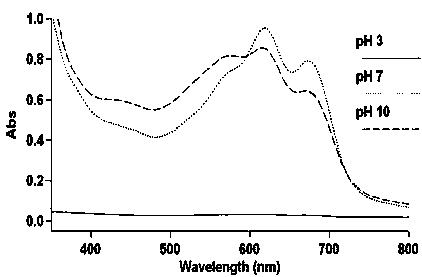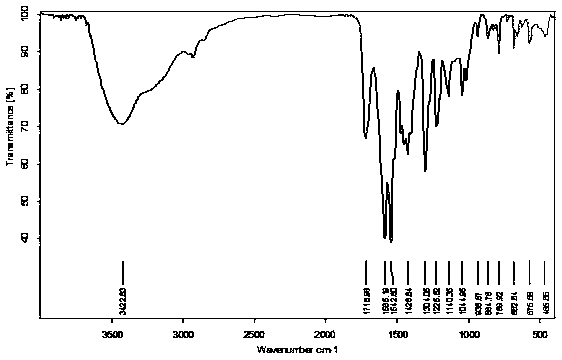An indigo pigment-producing fungus of the genus Botrytis and its application in printing and dyeing
A technology of botrytis and indigo pigments, applied in the fields of fungi, dyeing methods, microorganisms, etc.
- Summary
- Abstract
- Description
- Claims
- Application Information
AI Technical Summary
Problems solved by technology
Method used
Image
Examples
Embodiment 1
[0028] Embodiment 1: a strain produces indigo pigment Botrytis fungus Pseudofusicoccum sp. F10 (deposit unit: China Center for Type Culture Collection; preservation time: May 12, 2015; preservation address: Luojia Mountain, Wuchang, Wuhan (Wuhan University), zip code 430072; preservation number: CCTCC NO: M 2015293, Classification belongs to Botryobacteriaceae, Botrytis genus,
[0029] A described indigo pigment-producing Botrytis fungus Pseudofusicoccum sp. F10 (deposit number: CCTCC NO: M 2015293) , It is characterized in that the coloring of the aerial hyphae of the fungus changes from off-white to black with the growth of the fungus, and the color on the back of the petri dish (PSA, cultivated on potato sucrose agar) gradually changes from blue-gray to finally blue-black, aerial The top of the hyphae forms a capitulum, producing hyaline conidia, such as figure 1 shown.
[0030] A described indigo pigment-producing Botrytis fungus Pseudofusicoccum sp. F10 (deposit ...
Embodiment 2
[0047] Embodiment 2: a strain produces indigo pigment Botrytis fungus Pseudofusicoccum Sp. F10 (preservation number: CCTCC NO: M 2015293) bacterial fermentation broth dyeing characteristics of cotton fabrics are: cotton fabrics are dyed by post-media method in bacterial fermentation broth, dyed at 90°C for 60 minutes, cooled to 70°C, added mordant NaCl (5g / L), raise the temperature to 90°C, keep the temperature constant for 30 minutes, take out the cloth sample after cooling down to room temperature, wash with water and then dry; re-dyeing many times, the dyeing effect is good.
[0048]ACCTACCGGGATTAGGGTCTCTTCCCGAGCCCACTCTCCAACCCTTTGTGTACCTACCTCTGTTGCTTTGGCGGGCCGCGGTTCTCCGCGGCCGGCCCCCTAGCCGGGGCTGGCCTGCGCCCGCCAGAGGACCACAAAACTCCAGTCAGTGAACTTTGCTGTCTGATATAAATTCAATAAACTAAAACTTTCAACAACGGATCTCTTGGTTCTGGCATCGATGAAGAACGCAGCGAAATGCGATAAGTAATGTGAATTGCAGAATTCAGTGAATCATCGAATCTTTGAACGCACATTGCGCCCTTTGGTATTCCGAAGGGCATGCCTGTTCGAGCGTCATTACACCCCTCAAGCTCTGCTTGGTATTGGGCGGCGTCCTCTCCGGACGCGCCTCAAAG...
PUM
 Login to View More
Login to View More Abstract
Description
Claims
Application Information
 Login to View More
Login to View More - R&D
- Intellectual Property
- Life Sciences
- Materials
- Tech Scout
- Unparalleled Data Quality
- Higher Quality Content
- 60% Fewer Hallucinations
Browse by: Latest US Patents, China's latest patents, Technical Efficacy Thesaurus, Application Domain, Technology Topic, Popular Technical Reports.
© 2025 PatSnap. All rights reserved.Legal|Privacy policy|Modern Slavery Act Transparency Statement|Sitemap|About US| Contact US: help@patsnap.com



